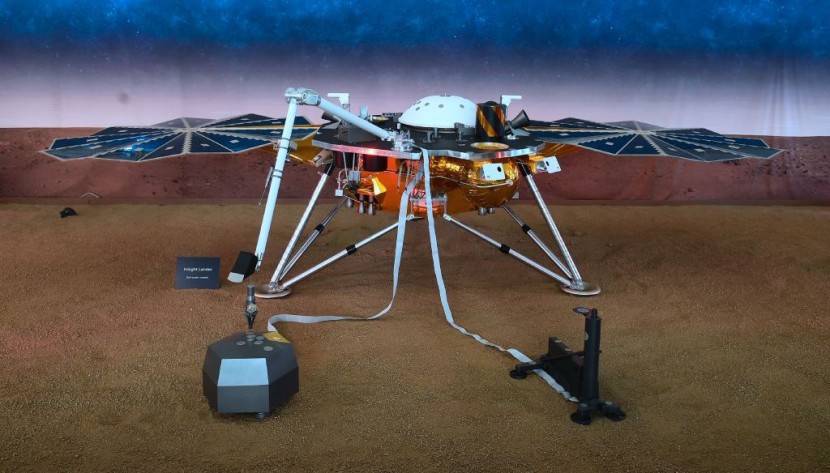
NASA and the Mars InSight Lander will stop due to less power in the coming months due to less sunlight on the planet's surface. The mission managers announced this on May 17 that will cause inactivity of the probe.
Mars InSight Lander Mission To End Soon
The solar power array has been significantly reduced by 500 watt-hours per Mars Day or sol. When it arrived in November 2018, the photovoltaic arrays generated nearly 5,000 watt-hours per sol, reported Science Alert.
According to Kathya Zamora Garcia, InSight's deputy project manager, all probe operations are expected to cease by the end of the calendar year. There is not enough power produced to keep it running.
However, by the end of the mission, the probe will have persisted nearly twice as long as initially expected, four Earth years rather than the planned two years, and it will have identified over 1,300 marsquakes.
The lander recently observed its largest marsquake to date, as well as the biggest quake ever observed on another planet that is a magnitude 5 event. The mission gathered unprecedented data on the configuration and interior of Mars, cited Universe Today.
InSight Principal Investigator Bruce Banerdt stated that we have been able to map out the inside of Mars for the first time in history. It highlights the effectiveness of seismology in planetary science, noted Gizmodo.
It transformed our comprehension of the interiors of rocky planets and set the tone for future missions, said Lori Glaze, director of NASA's Planetary Science Division.
Implementing what we've learned from Mars InSight Lander regarding Mars' inner structure to Earth, the Moon, Venus, and even other solar system rocky planets.
Read Also : Blueprint for Life Could Have Started From Asteroids Hitting the Protean Earth Billions of Years Ago
Cause of Lowered Power Output
The solar panels have become progressively coated in Martian dust. The team has long kept hoping that a dust devil might clear dust from the panels, as occurred with the Mars rovers Spirit and Opportunity. Regrettably, no such luck.
Because Mars dust is charged with static electricity, using its magnetization to clean off the panels in windy conditions. The probe was directed to scoop up Martian soil and drop it on the edge of the solar panels, looking to attract the dust already on the panels.
This clever trick increased energy production by about 5% each time, and the movement was effectively repeated six times, according to Garcia.
Dust accumulation is likely to escalate as Mars reaches winter when more dust is in the environment, and less sun's rays are available. For the last time this month, the lander's robotic arm is in its resting position, known as the retirement pose.
According to the team, if only 25% of panels were swept spotless by the wind, the lander would gain about 1,000 watt-hours per sol. Enough to keep collecting science.
However, with the current decrease in power, its non-seismic instruments will be very seldom used by May's end. It is anticipated that the seismometer will need to be shut off by the end of the summer, seeing the mission's science phase end. At NASA, the agency warns the Mars InSight Lander will enter a period of low activity until the solar panels clear up.
Related Article: NASA's Orion Unmanned Spacecraft is Ready To Journey to the Moon as the First Return in Decades
© 2025 HNGN, All rights reserved. Do not reproduce without permission.








